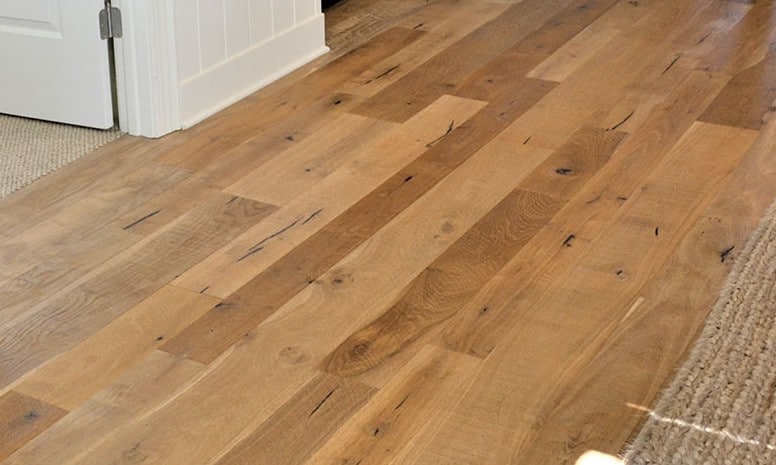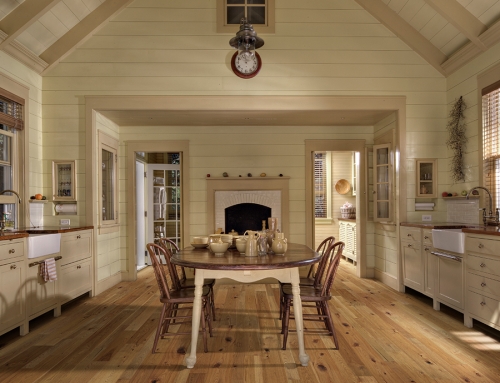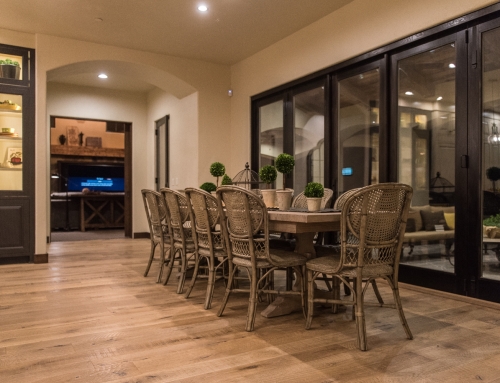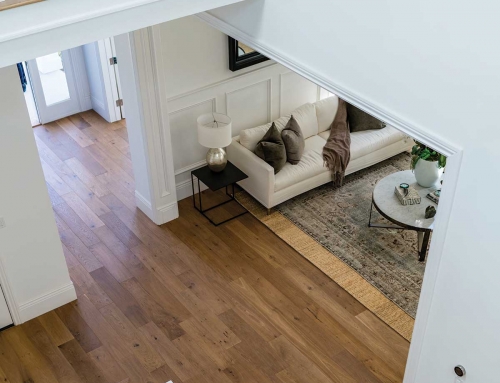
Organic 567 Gunpowder living room installation-by Kings Custom Hardwood
The beauty of fumed hardwood floors is naturally noticeable. Fumed floors are wildly beautiful. Fuming is a unique process that creates a beautiful, natural looking floor, without staining. Fuming naturally enhances the color and contrasts of the wood planks. Since fuming is a natural process for creating colors in wood floors, there may be a slight to extreme variation from dark to light shades within every color. There are three major factors that contribute to this variation: fuming, environment, and tannins. To truly understand the uniqueness, beauty and color variation in fuming, you need to understand the process, and remember that wood is grown, not produced. Wood planks come from nature and the natural color of the wood will vary from tree to tree.
What is fuming?
Fuming involves putting the oak planks into an enclosed environment, where airborne ammonia is released into the chamber atmosphere. The reaction to the ammonia is what creates the wood planks to change color. How long the planks are exposed to the ammonia determines the different colors within a collection, like with Malibu and Del Mar in the Alta Vista collection. How the wood interacts with the fuming process will create shade variations within a color, since each plank is different.
Airborne fuming is not to be confused with the surface application of an ammonia solution to the wood planks. This process shocks the wood and can damage the fiber of the wood. It does not provide the soft patina that is achieved with an airborne mist of ammonia.
The below graphic reflects the board to board variation that may occur in the fuming process.
How does the atmosphere play a role in the shade variations within individual colors?
Another reason for the color variation is the chamber itself, where the wood planks are placed for fuming. Hallmark Floors has procedures in place to control the environment or atmosphere inside the chamber, however the natural environment outside the chamber where it is located may still influence the chamber. Extreme outside humidity and temperatures may affect the inside environment of the chamber, thus resulting in shade variations.
Tannins and the environments impact on grading variations.
The next shade variation that may occur with fumed wood floors lies in the wood planks themselves. Wood is a natural product and it is harvested from different regions of the world. Naturally, the environment in which the tree grows plays a role in its characteristics and how much tannins are in the tree. Plus, trees may have more or less tannins in it depending on the time of year they are harvested. As a result, different environments and different harvest time’s result in different amounts of tannins in the wood planks. The tannins in the wood play a major role in the fuming color process, because of how the tannins react to the ammonia. These reactions will affect the natural the contrast of the color.
What are tannins and why are they important?
Tannins are complex chemical substances derived from phenolic acids (sometimes called tannic acid). They are classified as phenolic compounds, which are found in many species of plants, from all climates and all parts of the globe.

The Beauty of Fumed Hardwood Floors is perfectly displayed in this Novella Twain installation by Howdyshell Flooring.
How do tannins create shade variation within individual colors?
The shade variation occurs when the tannins in the wood react to the airborne ammonia inside the chamber. The amount of tannins in the board, and how close the tannins are to the surface of the wood when exposed to the ammonia, affects how much and how quickly the boards change color. The more tannins, the faster the color change will occur, and since each board will naturally have a different about of tannins, it will result in a range of shading from dark to light with in the same fumed color.
When viewing fumed oak products one will find the same variation of color that would be expected in natural stone. The fuming process enhances each board’s unique characteristic. Fuming is a process that has been used to change wood color for centuries and the processes very nature is more art than science since the wood chemistry and environmental conditions vary.
What consumers should know about fuming?
Each board is unique in its chemistry, and mineral streaks, and knots can range from dark to light in their reaction to the fuming process. All this said, fuming oak produces incredible depth and a pleasing patina that other wood processing methods cannot match or come close to.
In selecting any fumed product, customer awareness is key. The small amount of fumed wood product that can be seen in a sample board cannot provide a complete picture of the finished floor. This is why the room scene photography on the back of the sample and the photography on the website are very important.
Additionally, Hallmark Floors has a wide array of photographs of actual installations on its website that should be viewed, along with the color range charts that are found there, to gain a broader view of what to expect from a fumed product.
Color and grading characteristics should be discussed with the consumer beforehand and the consumer and installer must inspect the material prior to installation of the floor to ensure customer fully understands the nature of the floor prior to installation.
The Beauty of Fumed Hardwood Floors.
Learn more about Board Variation and why it is Wildly Beautiful.
The photos in this post are of real installations using Hallmark Floors’ fumed floors.
Howdyshell Flooring is a Spotlight Dealer located in Midlothian, VA 23113. Learn more about Howdyshell Flooring and why they are a spotlight dealer.
If you would like to see more beautiful fumed photos, please visit our Install Photos Gallery.
If you would like to find dealer near you, please visit our locator.










